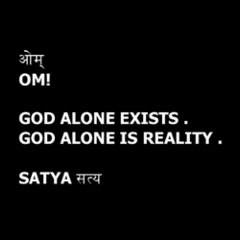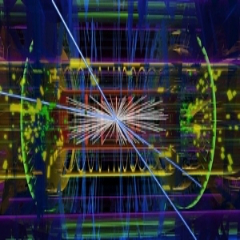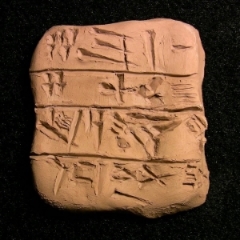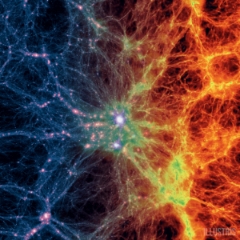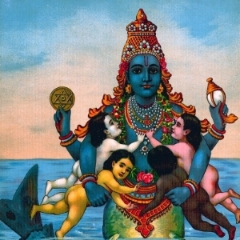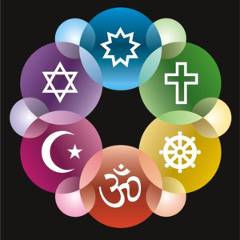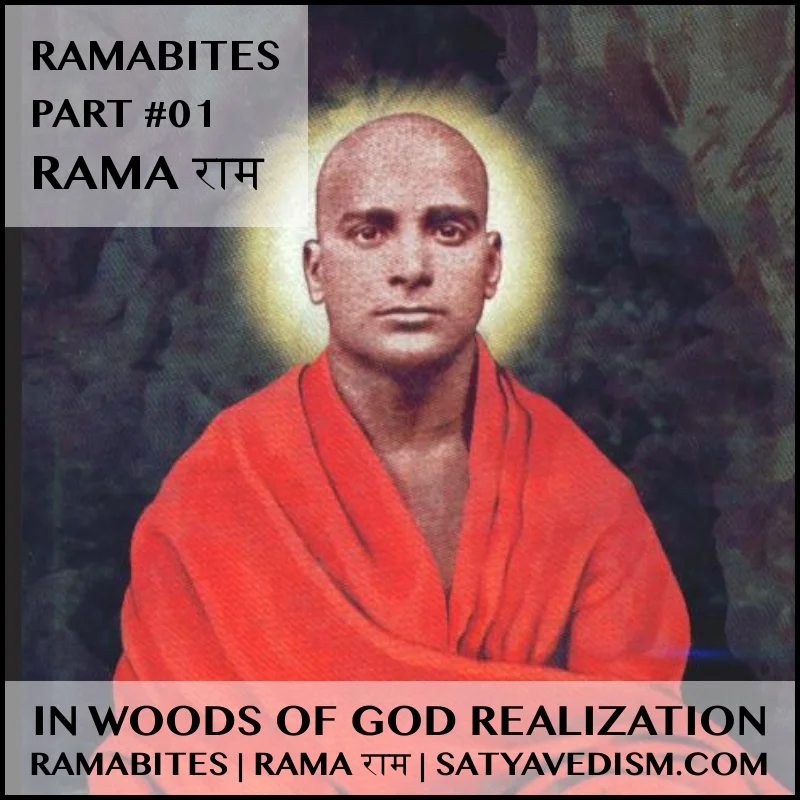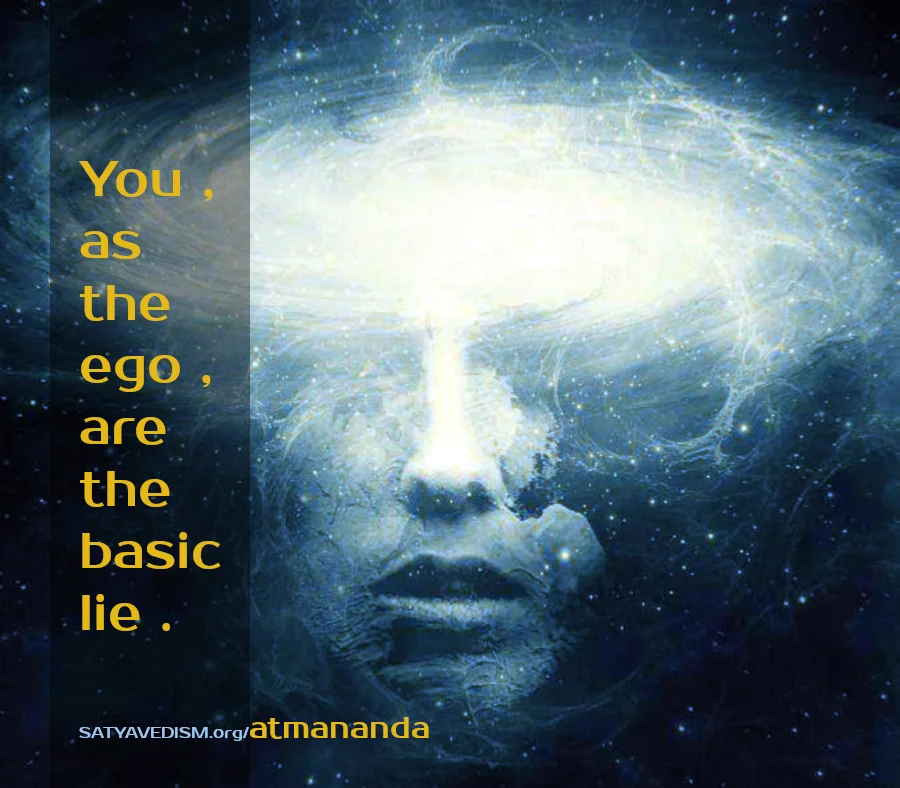10 CLASSIFICATIONS OF HINDU SCRIPTURES
| | homeALL ABOUT HINDUISM | CHAPTER 2 | SWAMI SIVANANDA
|| HINDU SCRIPTURES ||
SANSKRIT LITERATURE
Sanskrit literature can be classified under 6 orthodox heads and 4 secular heads . The 6 orthodox sections form the authoritative scriptures of the Hindus . The 4 secular sections embody the later developments in classical Sanskrit literature .
The 6 scriptures are :
( i ) Srutis , ( ii ) Smritis , ( iii ) Itihasas ,
( iv ) Puranas , ( v ) Agamas , ( vi ) Darsanas .
The 4 secular writings are :
( i ) Subhashitas , ( ii ) Kavyas ,
( iii ) Natakas , ( iv ) Alankaras .
THE SCRIPTURES
|| THE SRUTIS ||
The Srutis are called the Vedas , or the Amnaya . The Hindus have received their religion through revelation , the Vedas . These are direct intuitional revelations and are held to be Apaurusheya or entirely superhuman , without any author in particular . The Veda is the glorious pride of the Hindus , nay , of the whole world !
The term Veda comes from the root Vid , to know . The word Veda means knowledge . When it is applied to scripture , it signifies a book of knowledge . The Vedas are the foundational scriptures of the Hindus . The Veda is the source of the other five sets of scriptures , why , even of the secular and the materialistic .
The Veda is the storehouse of Indian wisdom and is a memorable glory which humans can never forget till eternity .
REVEALED TRUTHS WITHOUT BEGINNING OR END
The Vedas are the eternal truths revealed by GOD to the great ancient Rishis of India . The word Rishi means a seer from dris , to see . The Rishi is the Mantra-Drashta , a seer of Mantra or thought . The thought was not owned . The Rishis saw the truths or heard them . Therefore , the Vedas are what are heard ( Sruti ) . The Rishi did not write . It was not created from of the mind . The Rishi was the seer of thought which existed already — only the spiritual discoverer of the thought , not the inventor of the Veda .
The Vedas represent the spiritual experiences of the Rishis of yore . The Rishi is only a medium or an agent to transmit to people the intuitional experiences which was received . The truths of the Vedas are revelations . All the other religions of the world claim their authority as being delivered by special messengers of GOD to certain persons , but the Vedas do not owe their authority to anyone . They are themselves the authority as they are eternal , as they are the Knowledge of the Lord .
Lord Brahma , the Creator , imparted the divine knowledge to the Rishis or seers . The Rishis disseminated the knowledge . The Vedic Rishis were great realised persons who had direct intuitive perception of BRAHMAN or the Truth . They were inspired writers . They built a simple , grand and perfect system of religion and philosophy from which the founders and teachers of all other religions have drawn their inspiration .
The Vedas are the oldest books in the library of humans . The truths contained in all religions are derived from the Vedas and are ultimately traceable to the Vedas .
The Vedas are the fountainhead of religion . The Vedas are the ultimate source to which all religious knowledge can be traced . Religion is of divine origin . It was revealed by GOD to humans in the earliest times . It is embodied in the Vedas .
The Vedas are eternal .
They are without beginning and end .
An ignorant person may say :
How a book can be without beginning or end ?
By the Vedas , no books are meant .
Vedas came out of the breath of the Lord .
They are the words of GOD .
The Vedas are not the utterances of persons .
They are not the composition of any human mind .
They were never written , never created .
They are eternal and impersonal .
The date of the Vedas can never been fixed .
Vedas are eternal spiritual truths .
Vedas are an embodiment of divine knowledge .
The books may be destroyed ,
but the knowledge cannot be destroyed .
Knowledge is eternal .
In that sense , the Vedas are eternal .
THE FOUR VEDAS & THEIR SUBDIVISIONS
The Veda is divided into four great books : the Rig-Veda , the Yajur-Veda , the Sama-Veda and the Atharva-Veda . The Yajur-Veda is again divided into two parts , the Sukla and the Krishna . The Krishna or the Taittiriya is the older book and the Sukla or the Vajasaneya is a later revelation to sage Yajnavalkya from the resplendent Sun GOD .
The Rig-Veda is divided into twenty-one sections , the Yajur-Veda into one hundred and nine sections , the Sama-Veda into one thousand sections and the Atharva-Veda into fifty sections . In all , the whole Veda is thus divided into one thousand one hundred and eighty recensions .
Each Veda consists of four parts : the Mantra-Samhitas or hymns , the Brahmanas or explanations of Mantras or rituals , the Aranyakas and the Upanishads . The division of the Vedas into four parts is to suit the four stages in a human's life .
The Mantra-Samhitas are hymns in praise of the Vedic GOD for attaining material prosperity here and happiness hereafter . They are metrical poems comprising prayers , hymns and incantations addressed to various deities , both subjective and objective . The Mantra portion of the Vedas is useful for the Brahmacharins .
The Brahmana portions guide people to perform sacrificial rites . They are prose explanations of the method of using the Mantras in the Yajna or the sacrifice . The Brahmana portion is suitable for the householders .
The Aranyakas are the forest books , the mystical sylvan texts which give philosophical interpretations of the rituals . The Aranyakas are intended for the Vanaprasthas or hermits who prepare themselves for taking Sannyasa .
The Upanishads are the most important portion of the Vedas . The Upanishads contain the essence or the knowledge portion of the Vedas . The philosophy of the Upanishads is sublime , profound , lofty and soul-stirring . The Upanishads speak of the identity of the individual soul and the Supreme Soul . They reveal the most subtle and deep spiritual truths . The Upanishads are useful for the Sannyasins .
The subject matter of the whole Veda is divided into Karma-Kanda , Upasana-Kanda and Jnana-Kanda . The Karma-Kanda or Ritualistic Section deals with various sacrifices and rituals . The Upasana-Kanda or Worship-Section deals with various kinds of worship or meditation . The Jnana-Kanda or Knowledge-Section deals with the highest knowledge of Nirguna BRAHMAN . The Mantras and the Brahmanas constitute Karma-Kanda ; the Aranyakas Upasana-Kanda ; and the Upanishads Jnana-Kanda .
THE MANTRA-SAMHITAS
The Rig-Veda Samhita is the grandest book of the Hindus , the oldest and the best . It is the Great Indian Bible , which no Hindu would forget to adore from the core of the heart . Its style , the language and the tone are most beautiful and mysterious . Its immortal Mantras embody the greatest truths of existence , and it is perhaps the greatest treasure in all the scriptural literature of the world . Its priest is called the Hotri .
The Yajur-Veda Samhita is mostly in prose and is meant to be used by the Adhvaryu , the Yajur-Vedic priest , for superfluous explanations of the rites in sacrifices , supplementing the Rig-Vedic Mantras .
The Sama-Veda Samhita is mostly borrowed from the Rig-Vedic Samhita and is meant to be sung by the Udgatri , the Sama-Vedic priest , in sacrifices .
The Atharva-Veda Samhita is meant to be used by the Brahma , the Atharva-Vedic priest , to correct the mispronunciations and wrong performances that may accidentally be committed by the other three priests of the sacrifice .
THE BRAHMANAS & THE ARANYAKAS
There are two Brahmanas to the Rig-Veda — the Aitareya and the Sankhayana . " The Rig-Veda " , says Max Muller , " is the most ancient book of the world . The sacred hymns of the Brahmanas stand unparalleled in the literature of the whole world ; and their preservation might well be called miraculous " . ( History Of Ancient Sanskrit Literature )
The Satapatha Brahmana belongs to the Sukla Yajur-Veda . The Krishna-Yajur-Veda has the Taittiriya and the Maitrayana Brahmanas . The Tandya or Panchavimsa , the Shadvimsa , the Chhandogya , the Adbhuta , the Arsheya and the Upanishad Brahmanas belong to the Sama-Veda . The Brahmana of the Atharva-Veda is called the Gopatha . Each of the Brahmanas has got an Aranyaka .
THE UPANISHADS
The Upanishads are the concluding portions of the Vedas or the end of the Vedas . The teaching based on them is called Vedanta . The Upanishads are the gist and the goal of the Vedas . They form the very foundation of Hinduism .
There are as many Upanishads to each Veda as there are Sakhas , branches or recensions , ie , 21 , 109 , 1000 and 50 respectively to the four Vedas , the Rig-Veda , the Yajur-Veda , the Sama-Veda and the Atharva-Veda .
The different philosophers of India belonging to different schools , such as Monism , Qualified Monism , Dualism , Pure Monism , Difference-cum-non-difference , etc , have acknowledged the supreme authority of the Upanishads . They have given their own interpretations , but they have obeyed the authority . They have built their philosophy on the foundation of the Upanishads .
Even the Western scholars have paid their tribute to the seers of the Upanishads . At a time when the Westerners were clad in barks and were sunk in deep ignorance , the Upanishadic seers were enjoying the eternal bliss of the Absolute , and had the highest culture and civilisation .
The most important Upanishads are Isa , Kena , Katha , Prasna , Mundaka , Mandukya , Aitareya , Taittiriya , Chhandogya , Brihadaranyaka , Kaushitaki and Svetasvatara and Maitrayani . These are supremely authoritative .
May the fundamental truths of the Vedas be revealed unto you all , like the Amalaka fruit in the palm of your hand . May Gayatri , the blessed Parent of the Vedas , impart to you the milk of Knowledge , the ancient wisdom of the Upanishads .
THE UPA-VEDAS
There are four Upa-Vedas or subsidiary Vedas , viz , the Ayurveda , the Dhanurveda , the Gandharva Veda and the Arthasastra , forming auxiliaries to the four Vedas , which mean , respectively , the science of health , the science of war , the science of music and the science of polity .
THE VEDANGAS
There are six Angas or explanatory limbs , to the Vedas : the Siksha and Vyakarana of Panini , the Chhandas of Pingalacharya , the Nirukta of Yaska , the Jyotisha of Garga , and the Kalpas ( Srauta , Grihya , Dharma and Sulba ) belonging to the authorship of various Rishis .
Siksha is a knowledge of phonetics . Siksha deals with pronunciation and accent . The text of the Vedas is arranged in various forms or Pathas . The Pada-patha gives each word its separate form . The Krama-patha connects the word in pairs .
Vyakarana is Sanskrit grammar . Panini's books are most famous . Without knowledge of Vyakarana , you cannot understand the Vedas .
Chhandas is metre dealing with prosody .
Nirukta is philology or etymology .
Jyotisha is astronomy and astrology . It deals with the movements of the heavenly bodies , planets , etc , and their influence in human affairs .
Kalpa is the method of ritual . The Srauta Sutras which explain the ritual of sacrifices belong to Kalpa . The sulba Sutras , which treat of the measurements which are necessary for laying out the sacrificial areas , also belong to Kalpa . The Grihya Sutras which concern domestic life , and the Dharma Sutras which deal with ethics , customs and laws , also belong to Kalpa .
The Pratishakhyas , Padapathas , Kramapathas , Upalekhas , Anukramanis , Daivatsamhitas , Parishishtas , Prayogas , Paddhatis , Karikas , Khilas and Vyuhas are further elaborations in the rituals of the Kalpa Sutras .
Among the Kalpa Sutras , the Asvalayana , Sankhyana and the Sambhavya belong to the Rig-Veda . The Mashaka , Latyayana , Drahyayana , Gobhila and Khadira belong to the Sama-Veda . The Katyayana and Paraskara belong to the Sukla Yajur-Veda . The Apastamba , Hiranyakesi , Bodhayana , Bharadvaja , Manava , Vaikhanasa and the Kathaka belong to the Krishna Yajur-Veda . The Vaitana and the Kaushika belong to the Atharva-Veda .
|| THE SMRITIS ||
Next in importance to the Sruti are the Smritis or secondary scriptures . These are the ancient sacred law-codes of the Hindus dealing with the Sanatana-Varnasrama-Dharma . They supplement and explain the ritualistic injunctions called Vidhis in the Vedas . The Smriti Sastra is founded on the Sruti . The Smritis are based on the teachings of the Vedas . The Smriti stands next in authority to the Sruti . It explains and develops Dharma . It lays down the laws which regulate Hindu national , social , family and individual obligations .
The works which are expressly called Smritis are the law books , Dharma Sastras . Smriti , in a broader sense , covers all Hindu Sastras save the Vedas .
The laws for regulating Hindu society from time to time are codified in the Smritis . The Smritis have laid down definite rules and laws to guide the individuals and communities in their daily conduct and to regulate their manners and customs . The Smritis have given detailed instructions , according to the conditions of the time , to all classes of humans regarding their duties in life .
The Hindu learns how one has to spend one's whole life from these Smritis . The duties of Varnasrama and all ceremonies are clearly given in these books . The Smritis prescribe certain acts and prohibit some others for a Hindu , according to the birth and stage of life . The object of the Smritis is to purify the heart of the human and take one gradually to the supreme abode of immortality and make one perfect and free .
These Smritis have varied from time to time . The injunctions and prohibitions of the Smritis are related to the particular social surroundings . As these surroundings and essential conditions of the Hindu society changed from time to time , new Smritis had to be compiled by the sages of different ages and different parts of India .
THE CELEBRATED HINDU LAWGIVERS
From time to time , a great law-giver would take birth , and would codify the existing laws and remove those which had become obsolete , making some alterations , adaptations , readjustments , additions and subtractions , to suit the needs of the time and see that the way of living of the people would be in accordance with the teachings of the Veda . Of such law-givers , Manu , Yajnavalkya and Parasara are the most celebrated persons .
Hindu society is founded on , and governed by , the laws made by these three great sages . The Smritis are named after them . We have Manu Smriti or Manava Dharma-Sastra ( the Laws of Manu or the Institutes of Manu ) , Yajnavalkya Smriti and Parasara Smriti .
Manu is the greatest law-giver of the race , and is the oldest law-giver as well . The Yajnavalkya Smriti follows the same general lines as the Manu Smriti and is next in importance to it . Manu Smriti and Yajnavalkya Smriti are universally accepted at the present time as authoritative works all over India . Yajnavalkya Smriti is chiefly consulted in all matters of Hindu Law . Even the Government of India are applying some of these laws .
There are eighteen main Smritis or Dharma Sastras . The most important are those of Manu , Yajnavalkya and Parasara . The other fifteen are those of Vishnu , Daksha , Samvarta , Vyasa , Harita , Satatapa , Vasishtha , Yama , Apastamba , Gautama , Devala , Sankha-Likhita , Usana , Atri and Saunaka .
The laws of Manu are intended for the Satya Yuga , those of Yajnavalkya are for the Treta Yuga ; those of Sankha and Likhita are for the Dvapara Yuga ; and those of Parasara are for the Kali Yuga .
The laws and rules which are based entirely upon our social positions , time and clime , must change with the changes in society and changing conditions of time and clime . Then only the progress of the Hindu society can be ensured .
NEED FOR A NEW LAW CODE
It is not possible to follow some of the laws of Manu at the present time . We can follow their spirit and not the letter . Society is advancing . When it advances , it outgrows certain laws which were valid and helpful at a particular stage of its growth . Many new things which were not thought out by the old law-givers have come into existence now . It is no use insisting people to follow now those old laws which have become obsolete .
Our present society has considerably changed . A new Smriti to suit the requirements of this age is very necessary . Another sage will place before the Hindus of our days a new suitable code of laws . Time is ripe for a new Smriti . Cordial greetings to this age .
THE INNER VOICE OF DHARMA
One who is endowed with a pure heart through protracted Tapas , Japa , Kirtana , meditation and service of Guru and who has a very clear conscience , can be guided by the inner voice in matters of Dharma or duty or moral action . The inner voice that proceeds from a clean heart filled with Sattva is , indeed , the voice of GOD or Soul or Antaryamin or Inner Ruler . This voice is more than Smriti . It is Smriti of Smritis .
Purify your heart and train yourself to hear this inner voice . Keep your ear in tune with the " voice " .
THE SRUTI & THE SMRITI
The Sruti and the Smriti are the two authoritative sources of Hinduism . Sruti literally means what is heard , and Smriti means what is remembered . Sruti is revelation and Smriti is tradition . Upanishad is a Sruti . Bhagavad-Gita is a Smriti .
Sruti is direct experience . Great Rishis heard the eternal truths of religion and left a record of them for the benefit of posterity . These records constitute the Vedas . Hence , Sruti is primary authority .
Smriti is a recollection of that experience . Hence , it is secondary authority . The Smritis or Dharma Sastras also are books written by sages , but they are not the final authority .
If there is anything in a Smriti which contradicts the Sruti , the Smriti is to be rejected .
|| THE ITIHASAS ||
THE FRIENDLY TREATISES & THE COMMANDING TREATISES
There are four books under this heading : The Valmiki-Ramayana , the Yogavasishtha , The Mahabharata and the Harivamsa . These embody all that is in the Vedas , but only in a simpler manner . These are called the Suhrit-Samhitas or the Friendly Treatises , while the Vedas are called the Prabhu-Samhitas or the Commanding Treatises with great authority . These works explain the great universal truths in the form of historical narratives , stories and dialogues . These are very interesting volumes and are liked by all , from the inquisitive child to the intellectual scholar .
The Itihasas give us beautiful stories of absorbing interest and importance , through which all the fundamental teachings of Hinduism are indelibly impressed on one's mind . The laws of Smritis and the principles of the Vedas are stamped firmly on the minds of the Hindus through the noble and marvellous deeds of their great national heroes . We get a clear idea of Hinduism from these sublime stories .
The common person cannot comprehend the high abstract philosophy of the Upanishads and the Brahma Sutras . Hence , the compassionate sages Valmiki and Vyasa wrote the Itihasas for the benefit of common people . The same philosophy is presented with analogies and parables in a tasteful form to the common run of humankind .
The two well-known Itihasas ( histories ) are the epics ( Mahakavyas ) , Ramayana and Mahabharata . They are two very popular and useful Sastras of the Hindus . The Ramayana was written by the sage Valmiki , and the Mahabharata by Vyasa .
THE RAMAYANA
The Ramayana , the Adi-Kavya or the first epic poem , relates the story of Sri Rama , the ideal human . It is the history of the family of the solar race descended from Ikshvaku , in which was born Sri Ramachandra , the Avatara of Lord Vishnu , and three siblings . The ideal characters like Rama , Sita , Lakshmana , Bharata and Sri Hanuman that we find in Ramayana firmly establish Hindu Dharma in our minds .
The story of the birth of Rama and the siblings , their education and marriages , the exile of Sri Rama , the carrying off and recovery of Sita , the spouse , the destruction of Ravana , the Rakshasa Ruler of Lanka , and the reign of Sri Rama , are described in detail in Ramayana . How one should behave towards superiors , equals and inferiors , how a ruler ought to rule one's rulerdom , how one should lead one's life in this world , how one can obtain one's release , freedom and perfection , may be learnt from this excellent epic .
The Ramayana gives a vivid picture of Indian life . Even today our domestic , social and national ideals are copied from the noble characters in the Ramayana and the Mahabharata . The great national heroes stand even today as beacon-lights to guide and inspire the people of the whole world . The lives of Rama , Bharata and Lakshmana provide a model of fraternal affection and mutual service . Sri Hanuman stands as an ideal unique Karma Yogin . The life of Sita is regarded as the most perfect example of fidelity , chastity and sweetness . The Ramayana is written in twenty-four thousand verses by Sri Valmiki .
THE MAHABHARATA
The Mahabharata is the history of the Pandavas and the Kauravas . It gives a description of the great war , the Battle of Kurukshetra , which broke out between the Kauravas and the Pandavas who were cousins and descendants of the lunar race .
The Mahabharata is an encyclopaedia of Hindu Dharma . It is rightly called the fifth Veda . There is really no theme in religion , philosophy , mysticism and polity which this great epic does not touch and expound . It contains very noble moral teachings , useful lessons of all kinds , many beautiful stories and episodes , discourses , sermons , parables and dialogues which set forth the principles of morals and metaphysics . The Pandavas obtained victory through the grace of Lord Krishna . The Mahabharata is written in one hundred thousand verses by Sri Krishnadvaipayana Vyasa .
THE BHAGAVAD-GITA
The most important part of the Mahabharata is the Bhagavad-Gita . It is a marvellous dialogue between Lord Krishna and Arjuna on the battle-field , before the commencement of the great war . Bhagavan Sri Krishna became the charioteer of Arjuna . Sri Krishna explained the essentials of Hindu religion to Arjuna .
Just as the Upanishads contain the cream of the Vedas , so does the Gita contain the cream of the Upanishads . The Upanishads are the cows . Lord Krishna is the cowherd . Arjuna is the calf . The Gita is the milk . The wise are those who drink the milk of the Gita .
The Gita is the most precious jewel of Hindu literature . It is a universal gospel . The Gita teaches the Yoga of Synthesis . It ranks high in the religious literature of the world .
Arjuna saw dear relatives and teachers in the battle-field , and fainted , refusing to fight against them . Then Lord Krishna imparted knowledge of the Self to Arjuna , and convinced that it was the duty to fight regardless of consequences . Afterwards Arjuna gave up Moha , or delusion . All doubts were cleared . Arjuna fought against the Kauravas and achieved victory .
KNOWLEDGE OF ANCIENT INDIAN HISTORY & CULTURE
The Mahabharata contains also the immortal discourse of Bhishma on Dharma , which was given to Yudhishthira , when lying on the bed of arrows . The whole Mahabharata forms an encyclopaedia of history , morals and religion unsurpassed by any other epic in the world .
The Ramayana and the Mahabharata speak to us clearly about the ancient India , about the people , customs , ways of living , arts , civilisation and culture , manufactures , etc . If you read these two books , you will come to know how great India once was , and you will be inspired to make India great once more . No other country has produced so many great ones , great teachers , great Yogins , great Rishis , great prophets , great Acharyas , great kings , great heroes , great statesmen , great patriots and great benefactors , as India .
The more you know of India and Hinduism , the more you will honour and love it and the more thankful to the Lord you will be that you were born in India as a Hindu . Glory to India ! Glory to Hinduism ! Glory to the seers of the Upanishads ! Glory , Glory to Lord Krishna , the author of the Song Divine !
|| THE PURANAS ||
The Puranas are of the same class as the Itihasas . They have five characteristics ( Pancha-Lakshana ) viz , history , cosmology ( with various symbolical illustrations of philosophical principles ) , secondary creation , genealogy of kings and of Manvantaras . All the Puranas belong to the class of Suhrit-Samhitas .
Vyasa is the compiler of the Puranas from age to age ; and for this age , is Krishnadvaipayana , the offspring of Parasara .
The Puranas were written to popularise the religion of the Vedas . They contain the essence of the Vedas .
The aim of the Puranas is to impress on the minds of the masses the teachings of the Vedas and to generate in them devotion to GOD , through concrete examples , myths , stories , legends , lives of saints , rulers and great humans , allegories and chronicles of great historical events . The sages made use of these things to illustrate the eternal principles of religion . The Puranas were meant , not for the scholars , but for the ordinary people who could not understand high philosophy and who could not study the Vedas .
The Darsanas are very stiff . They are meant only for the learned few . The Puranas are meant for the masses with inferior intellect . Religion is taught in a very easy and interesting way through these Puranas . Even to this day , the Puranas are popular . The Puranas contain the history of remote times . They also give a description of the regions of the universe not visible to the ordinary physical eye . They are very interesting to read and are full of information of all kinds . Children hear the stories from their grandparents . Pundits and Purohits hold Kathas in temples , on banks of rivers and in other important places . Agriculturists , labourers and bazaar people hear the stories .
THE 18 PURANAS
There are eighteen main Puranas and an equal number of subsidiary Puranas or Upa-Puranas . The main Puranas are : Vishnu Purana , Naradiya Purana , Srimad Bhagavata Purana , Garuda ( Suparna ) Purana , Padma Purana , Varaha Purana , Brahma Purana , Brahmanda Purana , Brahma Vaivarta Purana , Markandeya Purana , Bhavishya Purana , Vamana Purana , Matsya Purana , Kurma Purana , Linga Purana , Siva Purana , Skanda Purana and Agni Purana . Of these , six are Sattvic Puranas and glorify Vishnu ; six are Rajasic and glorify Brahma ; six are Tamasic and they glorify Siva .
Neophytes or beginners in the spiritual Path are puzzled when they go through Siva Purana and Vishnu Purana . In Siva Purana , Lord Siva is highly eulogised and an inferior position is given to Lord Vishnu . Sometimes Vishnu is belittled . In Vishnu Purana , Lord Hari is highly eulogised and an inferior status is given to Lord Siva . Sometimes Lord Siva is belittled . This is only to increase the faith of the devotees in their particular Ishta-Devata . Lord Siva and Lord Vishnu are one .
The best among the Puranas are the Srimad Bhagavata and the Vishnu Purana . The most popular is the Srimad Bhagavata Purana . Next comes Vishnu Purana . A portion of the Markandeya Purana is well known to all Hindus as Chandi , or Devimahatmya . Worship of GOD as the Divine Parent is its theme . Chandi is read widely by the Hindus on sacred days and Navaratri ( Durga Puja ) days .
THE SRIMAD BHAGAVATA PURANA & THE 10 AVATARAS
The Srimad Bhagavata Purana is a chronicle of the various Avataras of Lord Vishnu . There are ten Avataras of Vishnu . The aim of every Avatara is to save the world from some great danger , to destroy the wicked and protect the virtuous .
The ten Avataras are : Matsya ( The Fish ) , Kurma ( The Tortoise ) , Varaha ( The Boar ) , Narasimha ( The Human-Lion ) , Vamana ( The Dwarf ) , Parasurama ( Rama with the axe , the destroyer of the Kshatriya race ) , Ramachandra ( The hero of Ramayana — the offspring of Dasaratha ) , who destroyed Ravana , Sri Krishna , The teacher of the Gita , Buddha ( The royal-ascetic , founder of Buddhism ) and Kalki ( The hero riding on a white horse , who is to come at the end of the Kali-Yuga ) .
The object of the Matsya Avatara was to save Vaivasvata Manu from destruction by a deluge . The object of Kurma Avatara was to enable the world to recover some precious things which were lost in the deluge . The Kurma gave its back for keeping the churning rod when the gods and the Asuras churned the ocean of milk . The purpose of Varaha Avatara was to rescue , from the waters , the earth which had been dragged down by a demon named Hiranyaksha . The purpose of Narasimha Avatara , half-lion and half-human , was to free the world from the oppression of Hiranyakasipu , a demon , the parent of Bhakta Prahlada .
The object of Vamana Avatara was to restore the power of the gods which had been eclipsed by the penance and devotion of Ruler Bali . The object of Parasurama Avatara was to deliver the country from the oppression of the Kshatriya rulers . Parasurama destroyed the Kshatriya race twenty-one times . The object of Rama was to destroy the wicked Ravana . The object of Sri Krishna Avatara was to destroy Kamsa and other demons , to deliver the wonderful message of the Gita in the Mahabharata war , and to become the centre of the Bhakti schools of India . The object of Buddha Avatara was to prohibit animal sacrifices and teach piety . The object of the Kalki Avatara is the destruction of the wicked and the re-establishment of virtue .
THE TAMIL PURANAS
Lord Siva incarnated in the form of Dakshinamurti to impart knowledge to the four Kumaras ; took human form to initiate Sambandhar , Manikkavasagar , Pattinathar ; and appeared in flesh and blood to help devotees and relieve their sufferings . The divine Lilas of Lord Siva are recorded in the Tamil Puranas like Siva Purana , Periya Purana , Siva Parakramam and Tiruvilayadal Purana .
THE UPA-PURANAS
The eighteen Upa-Puranas are : Sanatkumara , Narasimha , Brihannaradiya , Sivarahasya , Durvasa , Kapila , Vamana , Bhargava , Varuna , Kalika , Samba , Nandi , Surya , Parasara , Vasishtha , Devi-Bhagavata , Ganesa and Hamsa .
UTILITY OF THE PURANAS
Study of the Puranas , listening to sacred recitals of scriptures , describing and expounding of the transcendent Lilas of the Blessed Lord — these form an important part of Sadhana of the Lord's devotees . It is most pleasing to the Lord . Sravana is a part of Navavidha-Bhakti . Kathas and Upanyasas open the springs of devotion in the hearts of hearers and develop Prema-Bhakti which confers immortality on the Jiva .
The language of the Vedas is archaic , and the subtle philosophy of Vedanta and the Upanishads is extremely difficult to grasp and assimilate . Hence , the Puranas are of special value as they present philosophical truths and precious teachings in an easier manner . They give ready access to the mysteries of life and the key to bliss . Imbibe their teachings . Start a new life of Dharma-Nishtha and Adhyatmic Sadhana from this very day .
|| THE AGAMAS ||
Another class of popular scriptures are the Agamas . The Agamas are theological treatises and practical manuals of divine worship . The Agamas include the Tantras , Mantras and Yantras . These are treatises explaining the external worship of GOD , in idols , temples , etc .
All the Agamas treat of ( i ) Jnana or Knowledge , ( ii ) Yoga or Concentration , ( iii ) Kriya or Esoteric Ritual and ( iv ) Charya or Exoteric Worship . They also give elaborate details about ontology and cosmology , liberation , devotion , meditation , philosophy of Mantras , mystic diagrams , charms and spells , temple-building , image-making , domestic observances , social rules , public festivals , etc .
The Agamas are divided into three sections : The Vaishnava , the Saiva and the Sakta . The three chief sects of Hinduism , viz , Vaishnavism , Saivism and Saktism , base their doctrines and dogmas on their respective Agamas . The Vaishnava Agamas or Pancharatra Agamas glorify GOD as Vishnu . The Saiva Agamas glorify GOD as Siva and have given rise to an important school of philosophy known as Saiva-Siddhanta , which prevails in South India , particularly in the districts of Tirunelveli and Madurai . The Sakta Agamas or Tantras glorify GOD as the Parent of the Universe , under one of the many names of Devi .
The Agamas do not derive their authority from the Vedas , but are not antagonistic to them . They are all Vedic in spirit and character . That is the reason why they are regarded as authoritative .
THE VAISHNAVA AGAMAS
The Vaishnava Agamas are of four kinds : the Vaikhanasa , Pancharatra , Pratishthasara and Vijnanalalita . The Brahma , Saiva Kaumara , Vasishtha , Kapila , Gautamiya and the Naradiya are the seven groups of the Pancharatras . The Naradiya section of the Santi-Parva of the Mahabharata is the earliest source of information about the Pancharatras .
Vishnu is GOD in the Pancharatra Agamas . The Vaishnavas regard the Pancharatra Agamas to be the most authoritative . They believe that these Agamas were revealed by Lord Vishnu . Narada-Pancharatra says : " Everything from Brahma to a blade of grass is Lord Krishna " . This corresponds to the Upanishadic declaration : " All this is , verily , BRAHMAN — Sarvam Khalvidam Brahma " .
There are two hundred and fifteen of these Vaishnava texts . Isvara , Ahirbudhnya , Paushkara , Parama , Sattvata , Brihad-Brahma and Jnanamritasara Samhitas are the important ones .
THE SAIVA AGAMAS
The Saivas recognise twenty-eight Agamas , of which the chief is Kamika . The Agamas are also the basis of Kashmir Saivism which is called the Pratyabhijna system . The latter works of Pratyabhijna system show a distinct leaning to Advaitism . The Southern Saivism , ie , Saiva Siddhanta and the Kashmir Saivism , regard these Agamas as their authority , besides the Vedas . Each Agama has Upa-Agamas . Of these , only fragmentary texts of twenty are extant . Lord Siva is GOD in the Saiva Agamas . They are suitable to this age , Kali Yoga . They are open to all castes and genders .
THA SAKTA AGAMAS
There is another group of scriptures known as the Tantras . They belong to the Sakta cult . They glorify Sakti as GOD . They dwell on the Sakti ( energy ) aspect of GOD and prescribe numerous courses of ritualistic worship of the Divine Parent in various forms . There are seventy-seven Agamas . These are very much like the Puranas in some respects . The texts are usually in the form of dialogues between Siva and Parvati .
In some of these , Siva answers the questions put by Parvati , and in others , Parvati answers , Siva questioning . Mahanirvana , Kularnava , Kulasara , Prapanchasara , Tantraraja , Rudra-Yamala , Brahma-Yamala , Vishnu-Yamala and Todala Tantra are the important works . The Agamas teach several occult practices some of which confer powers , while the others bestow knowledge and freedom . Sakti is the creative power of Lord Siva . Saktism is really a supplement to Saivism .
Among the existing books on the Agamas , the most famous are the Isvara-Samhita , Ahirbudhnya-Samhita , Sanatkumara-Samhita , Narada-Pancharatra , Spanda-Pradipika and the Mahanirvana-Tantra .
|| THE DARSANAS ||
These are the intellectual section of the Hindu writings , while the first four are intuitional , and the fifth inspirational and emotional . Darsanas are schools of philosophy based on the Vedas . The Agamas are theological . The Darsana literature is philosophical . The Darsanas are meant for the erudite scholars who are endowed with acute acumen , good understanding , power of reasoning and subtle intellect . The Itihasas , Puranas and Agamas are meant for the masses . The Darsanas appeal to the intellect , while the Itihasas , Puranas , etc , appeal to the heart .
Philosophy has six divisions — Shad-darsana — the six Darsanas or ways of seeing things , usually called the six systems or six different schools of thought . The six schools of philosophy are the six instruments of true teaching or the six demonstrations of Truth . Each school has developed , systematised and correlated the various parts of the Veda in its own way . Each system has its Sutrakara , ie , the one great Rishi who systematised the doctrines of the school and put them in short aphorisms or Sutras .
The Sutras are terse and laconic . The Rishis have condensed their thoughts in the aphorisms . It is very difficult to understand them without the help of commentaries by great sages or Rishis . Hence , there arose many commentators or Bhashyakaras . There are glosses , notes and , later , commentaries on the original commentaries .
The Shad-Darsanas ( the six schools of philosophy ) or the Shat-Sastras are : the NYAYA , founded by Gautama Rishi , the VAISESHIKA by Kanada Rishi , the SANKHYA by Kapila Muni , the YOGA by Patanjali Maharshi , the PURVA MIMAMSA by Jaimini , and the UTTARA MIMAMSA or VEDANTA by Badarayana or Vyasa .
The Darsanas are divided into three pairs of aphoristic compositions which explain the philosophy of the Vedas in a rationalistic method of approach . They are : the Nyaya and the Vaiseshika , the Sankhya and the Yoga , and the Mimamsa and the Vedanta . Each set of Sutras has got its Bhashya , Vritti , Varttika , Vyakhyana or Tika and Tippani .
SUTRA
Svalpaksharam-asandigdham
Saravad-visvatomukham
Astobham-anavadyam cha
Sutram sutravido viduh
A Sutra or an aphorism is a short formula with the least possible number of letters , without any ambiguity or doubtful assertion , containing the very essence , embracing all meanings , without any stop or obstruction and absolutely faultless in nature .
The Sutrakara or the composer of the aphorisms is said to be as happy as one would be while getting the first child , if but able to reduce one letter in the abstruse Sutra of far-fetched words and ideas . The best example of the greatest , the tersest and the most perfect of Sutra literature is the series of aphorisms called the Ashtadhyayi composed by Panini . Panini is the fount of all Sutrakaras from whom all others seem to have borrowed the method of composition .
The Sutras are meant to explain a big volume of knowledge in short assertions suitable to be kept in memory at all times . The six Vedangas and the six systems of Hindu philosophy form the twelve sets of Sutra literature of the world . In addition to these , there are later compositions like the Narada-Bhakti Sutras , the Sandilya-Bhakti Sutras , etc , which also wish to assume an equal form with the famous Sutras mentioned above .
BHASYA
Sutrartho varnyate yatra
Padaih sutranusaribhih
Svapadani cha varnyante
Bhashyam bhashyavido viduh
A Bhashya is an elaborate exposition , a commentary on the Sutras , with word by word meaning of the aphoristic precepts , their running translation , together with the individual views of the commentator or the Bhashyakara . The best and the exemplary Bhashya in Sanskrit literature is the one written by Patanjali on the Vyakarana Sutras of Panini . This Bhashya is so very famous and important that it is called the MAHABHASHYA and its celebrated author is specially called the BHASHYAKARA .
Patanjali is the parent of Bhashyakaras . The next important Bhashya is the one on the Mimamsa Sutras written by Sabara-Swamin who learnt the art from Patanjali's commentary . The third important Bhashya was written by Sankara on the Brahma Sutras , in close following with the Sabara-Bhashya .
The Bhashyas on the six sets of aphorisms dealing with Indian philosophy were written by Vatsyayana , Prasastapada , Vijnanabhikshu , Vyasa , Sabara and Sankara . On the Vedanta or Brahma Sutras , there are about sixteen Bhashyas , like those of Ramanuja , Madhva , Vallabha , Nimbarka , etc .
VRITTI
SADVRITTIH SANNIBANDHANA
A Vritti is a short gloss explaining the aphorisms in a more elaborate way , but not as extensively as a Bhashya . An example is Bodhayana's Vritti on the Brahma Sutras .
VARTTIKA
Uktanuktaduruktanam
Chinta yatra pravartate
Tam grantham varttikam prahuh
Varttikajnavichakshanah
A Varttika is a work where a critical study is made of that which is said and left unsaid or imperfectly said in a Bhashya , and the ways of making it perfect by supplying the omissions therein , are given .
Examples are the Varttikas of Katyayana on Panini's Sutras , of Suresvara on Sankara's Upanishad-Bhashyas , and of Kumarila Bhatta on the Sabara-Bhashya on the Karma-Mimamsa .
VYAKHYANA OR TIKA
A Vyakhyana is a running explanation in an easier language of what is said in the original , with little elucidations here and there . A Vyakhyana , particularly of a Kavya , deals with eight different modes of dissection of the Sloka , like Pada-Chheda , Vigraha , Sandhi , Alankara , Anuvada , etc . This forms an important aspect in the study of Sanskrit Sahitya Sastra .
An Anu-Vyakhyana — like the one written by Sri Madhva — is a repetition of what is already written , but in greater detail . An Anuvada is merely a running translation or statement of an abstruse text of the original . Tika is only another name for Vyakhyana .
The best Vyakhyanas are of Vachaspati Misra on the Darsanas , especially on Sankara's Brahmasutra-Bhashya .
TIPPANI
Tippani is just like a Vritti , but is less orthodox than the Vritti . It is an explanation of difficult words or phrases occurring in the original .
Examples are Kaiyata's gloss on the Mahabhashya of Patanjali , Nagojibhatta's gloss on Kaiyata's gloss , or Appayya's gloss on Amalananda's gloss on the Bhamati of Vachaspati Misra .
OTHER SCRIPTURES
The Tevaram and the Tiruvachakam which are the hymns of the Saiva saints of South India , the Divya-Prabandham of the Alvar saints of South India , the songs of Kabir , the Abhangas of Tukaram and the Ramayana of Tulasi Das — all of which are the outpourings of great realised souls — are wonderful scriptures . They contain the essence of the Vedas .
THE SECULAR WRITINGS
|| THE SUBHASHITAS ||
The Subhashitas are wise sayings , instructions and stories , either in poetry or in prose . Examples are Bhartrihari's three centuries of verses , the Subhashita-Ratna-Bhandagara and Somadeva Bhatta's Katha-Sarit-Sagara or Kshemendra's Brihat-Katha-Manjari . The Panchatantra and the Hitopadesa also belong to this category .
|| THE KAVYAS ||
These are highly scholarly compositions in poetry , prose or both . The greatest of poetical Kavyas are those of Kalidas ( The Raghuvamsa and Kumarasambhava ) , Bharavi ( The Kiratarjuniya ) , Magha ( The Sisupalavadha ) , Sri Harsha ( The Naishadha ) .
The best prose Kavyas in the whole of Sanskrit literature were written by Bhattabana ( The Kadambari and Harshacharita ) , the great genius in classical Sanskrit .
Among those containing both poetry and prose , the Champu-Ramayana and the Champu-Bharata are most famous .
These are all wonderful masterpieces which will ever remain to glorify India's literary calibre .
|| THE NATAKAS ||
These are marvellously scholastic dramas embodying the Rasas of Sringara , Vira , Karuna , Adbhuta , Hasya , Bhayanaka , Bibhatsa and Raudra . It is told that none can write on the ninth Rasa , viz , Santi . It is attainable only on final Liberation .
The best dramas are written by Kalidasa ( Sakuntala ) , Bhavabhuti ( Uttara-Rama-Charita ) , and Visakhadatta ( Mudrarakshasa ) .
|| THE ALANKARAS ||
These are grand rhetorical texts , treating of the science of perfection and beauty of ornamental language and of effective composition with elegance and force , both in poetry and in prose . These are the fundamentals of Sanskrit Sahitya , even superior to the Kavyas and the Natakas .
The best Alankara-Granthas are those of Mammata ( Kavyaprakasa ) and Jagannatha ( Rasagangadhara ) .
|| CONCLUSION ||
These constitute the entirety of Sanskrit literature — sacred and secular . The Sruti is the root ; the Smritis , Itihasas and Puranas are the trunk ; the Agamas and Darsanas are the branches ; and the Subhashitas , Kavyas , Natakas and Alankaras are the flowers of the tree of India's Culture .
The Smritis , the Itihasas , the Puranas , the Agamas and the Darsanas are only developments of the Veda . Their ultimate source is the Veda . Their one common aim is to enable the human to annihilate one's ignorance and attain perfection , freedom , immortality and eternal bliss through knowledge of GOD or the Eternal . Their purpose is to make the human like GOD and one with GOD .
SOURCE | SATYAVEDISM.ORG











